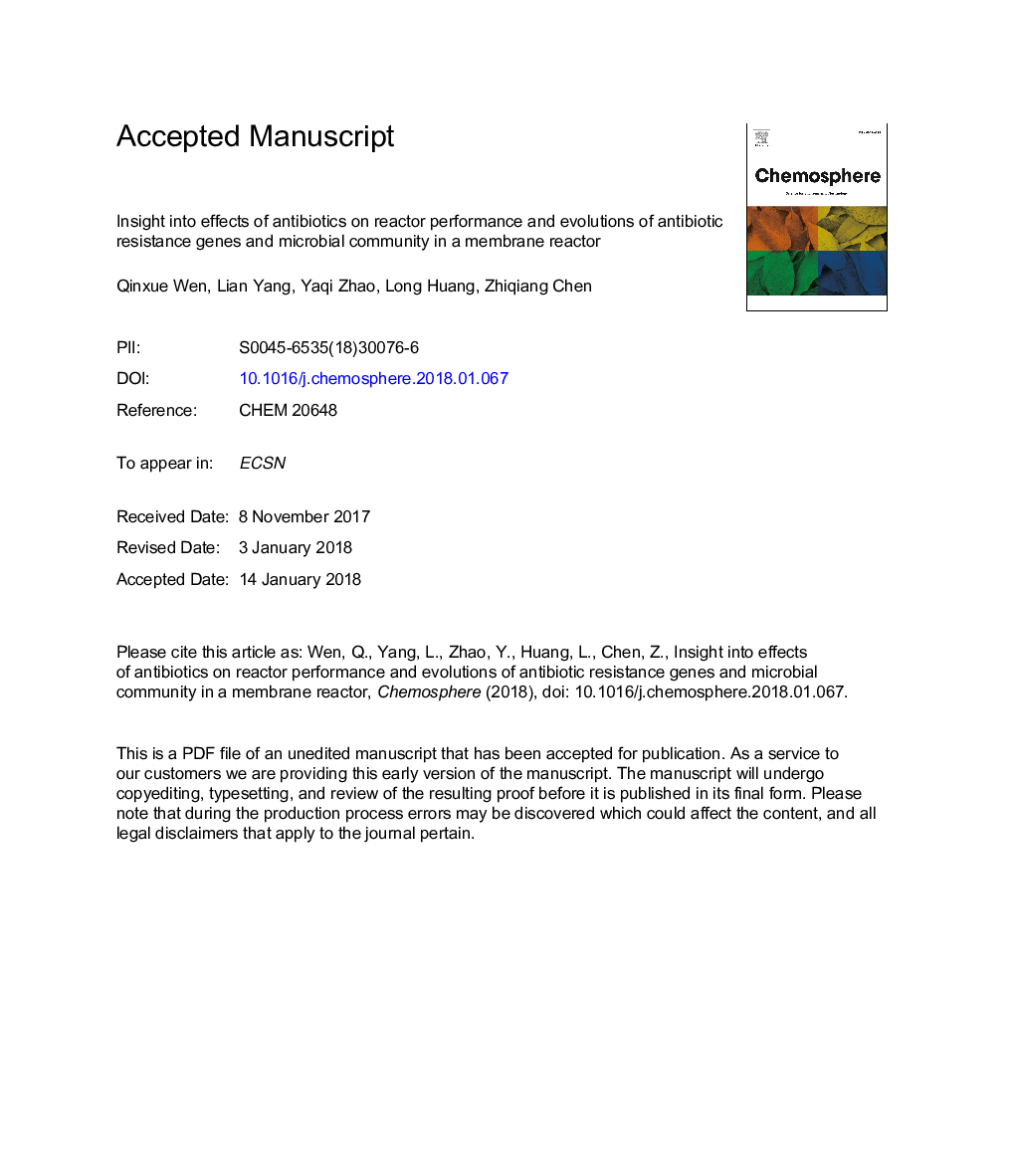| Article ID | Journal | Published Year | Pages | File Type |
|---|---|---|---|---|
| 8852110 | Chemosphere | 2018 | 34 Pages |
Abstract
A lab-scale anoxic/oxic-membrane bioreactor was designed to treat antibiotics containing wastewater at different antibiotics concentrations (0.5â¯mg/L, 1â¯mg/L and 3â¯mg/L of each antibiotic). Overall COD and NH4+N removal (more than 90%) were not affected during the exposure to antibiotics and good TN removal was also achieved, while TP removal was significantly affected. The maximum removal efficiency of penicillin and chlorotetracycline reached 97.15% and 96.10% respectively due to strong hydrolysis, and sulfamethoxazole reached 90.07% by biodegradation. However, 63.87% of norfloxacin maximum removal efficiency was achieved mainly by sorption. The system had good ability to reduce ARGs, peaking to more than 4 orders of magnitude, which mainly depended on the biomass retaining of the membrane module. Antibiotics concentration influenced the evolution of ARGs and bacterial communities in the reactor. This research provides great implication to reduce ARGs and antibiotics in antibiotics containing wastewater using A/O-MBR.
Related Topics
Life Sciences
Environmental Science
Environmental Chemistry
Authors
Qinxue Wen, Lian Yang, Yaqi Zhao, Long Huang, Zhiqiang Chen,
